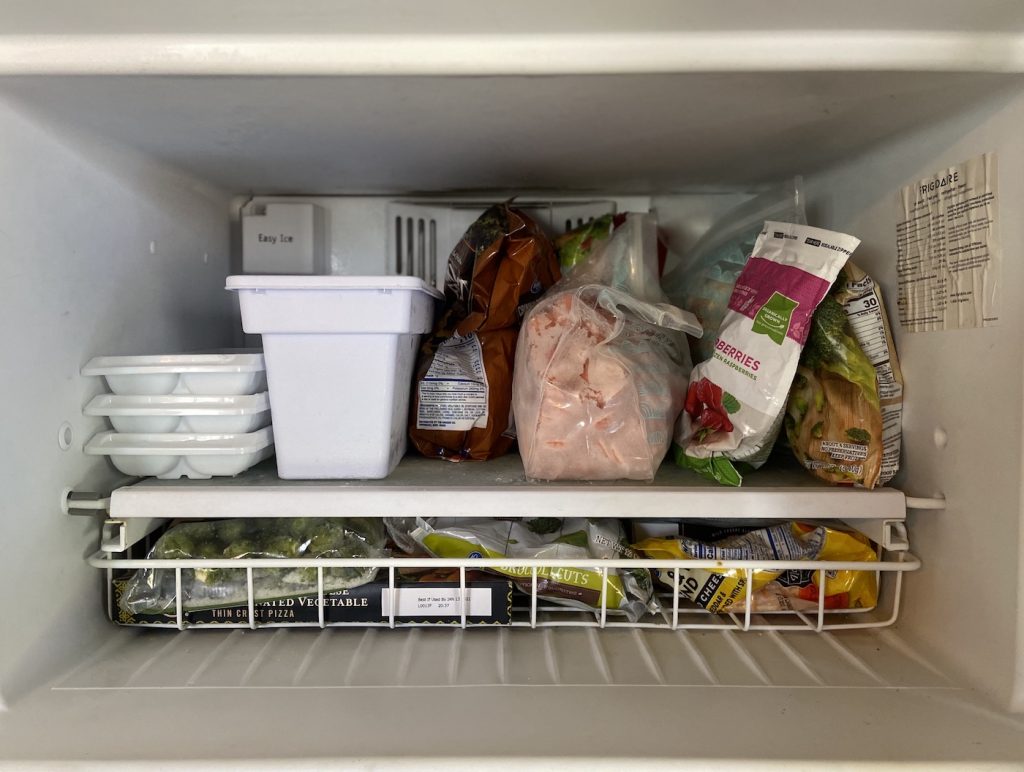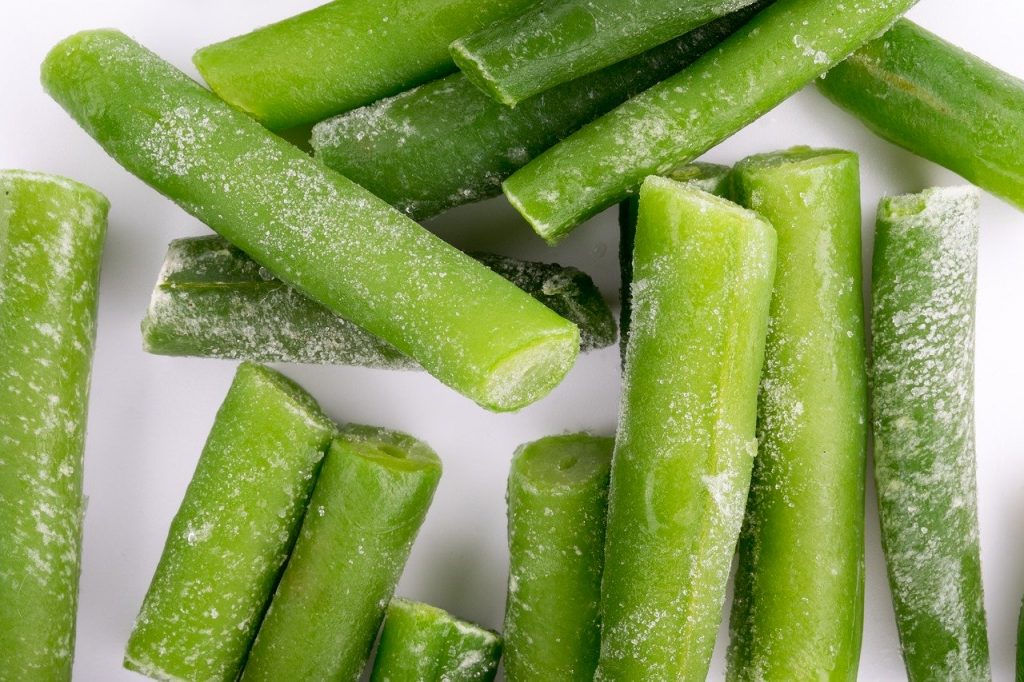Freezing is one of the fastest and easiest ways to preserve foods at home. Using the right supplies and equipment to freeze will help maintain the nutritional value and quality of your food.

Freezing helps to slow natural chemical reactions that lead to nutrient, flavor, and color degradation in fresh fruits and vegetables. Freezing also preserves food by slowing the growth of microorganisms that can lead to foodborne illness.
Supplies and Equipment
Freezer
The ideal temperature for freezing is 0°F or below. Use a thermometer to check temperature regularly.
Chest freezer (stand alone)
- Generally maintains the coldest temperatures and highest food quality
- Best freezer choice for longer-term storage
Refrigerator-freezer combo
- Will maintain 0°F or below, but temperatures can fluctuate with frequent use
- For longer-term storage, foods should be placed toward the back of the freezer
Mini-Fridge with freezer
- Difficult to maintain 0°F
- Not well suited for long-term storage
Temperature
Use a freezer thermometer and check temperatures regularly.
- Freeze foods at 0°F or below to maintain optimal quality, nutrient value, color, and flavor.
- Foods frozen at 0-32°F lose quality more quickly. For every 5°F increase in storage temperature, changes in quality occur twice as fast.
- Freezing large quantities of fresh food can raise the temperature of your freezer. Distribute food within the freezer to allow for faster freezing and try to limit the amount of unfrozen food added to the freezer at one time.
| Freezing Tip: If you live in an area with frequent power outages, use a frozen water bottle as a temperature indicator. Fill a clear plastic water bottle half-way with water and freeze upright. Place the frozen water bottle on its side in the freezer. If the water placement changes, you’ll know the temperature rose above freezing. |
Thawing Tips:Refrigeration is the safest way to thaw frozen foods. Use a thermometer to ensure your refrigerator stays below 40°F. Cold Water can be used to thaw safely. Change water every 30 minutes. Use a microwave oven to thaw frozen foods only if you plan to consume or cook them right away.
Storage Containers and Wraps
Label freezer containers with the name of the food and the date it was placed in the freezer.
- Pack foods in individual portions so you can thaw only what you need. Thawed food spoils more quickly than fresh.
- Containers for freezing should be airtight, moisture-proof, odor- proof, and vapor-proof. Excess airspace in storage containers can result in freezer burn, but foods with high water content expand as they freeze, so leave space for expansion when freezing fresh fruits and vegetables, soups and sauces.
Glass canning jars
- Leave 1-2 inches at the top to prevent breakage with expansion.
Rigid plastic containers
- Make sure lids seal tightly.
Laminated freezer paper (butcher paper)
- The waxy coating provides moisture and vapor barrier.
- Wrap tightly so foods are not exposed to air.
Freezer bags
- Use zip-top freezer bags.
- Remove air from bags when sealing.
Aluminum foil
- Use heavy-duty aluminum foil.
- Foil is more moisture-resistant than plastic wrap.
Plastic Wrap
- Use thick, high-quality plastic wrap.
Vacuum-seal bags
- These help maintain food quality by reducing air exposure.
Commercial packaging
- Since most clear, retail packaging is not moisture-resistant, additional wrapping of these foods prior to freezing is recommended.
- Meats vacuum-sealed in thick plastic can be frozen without additional wrapping.
Thawing
Thawing is an important step for both food safety and food quality.
- To avoid the temperature danger zone of 40°F-140°F (where bacterial growth is accelerated) plan ahead and allow time to thaw.
Quick Facts….

- Food will not spoil in the freezer at 0°F or below. Although frozen food that exceeds its recommended storage time is still safe, nutritional quality and texture deteriorate over time.
- For every 5°F increase in storage temperature, changes in quality occur twice as fast.
- When freezing large quantities of fresh produce, if possible, set the freezer temperature at -10°F at least 24 hours ahead of freezing. Once frozen, maintain a temperature at 0°F or below.


